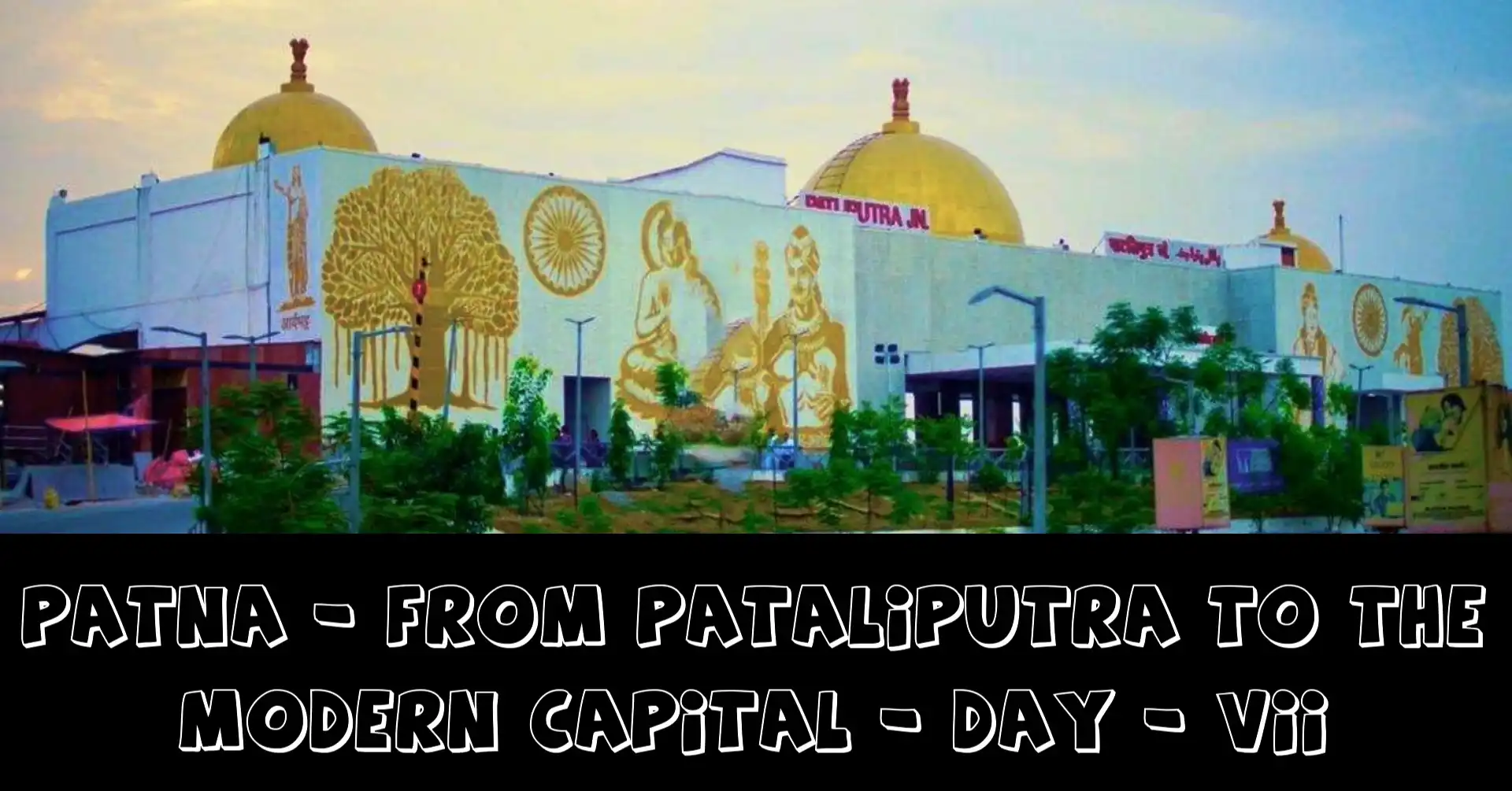Patna – From Pataliputra to the Modern Capital, once known as Pataliputra, is not just a city but a shining page in the history of India. This city was not only the most prestigious capital of ancient India, but even today it preserves its historical and cultural heritage as the modern capital of Bihar. In this article, we will understand the journey of Patna from history to the present through the eyes of a common reader.

Also Read: – Vaishali – The World’s First Republic – Day – VI
The Beginning of Pataliputra – Where did the Name Come from?
Long ago, when rivers were the main basis of life in India, there was a small village Pataligram on the banks of the river Ganges. It is said that King Ajatashatru fortified it and developed it as a capital and since then it was named – Pataliputra.
This was the time when cities were built at the confluence of rivers so that trade, travel and life all ran smoothly. And with this thought, Pataliputra entered history.
Maurya and Gupta Empire – Golden Capital of India
Emperor Chandragupta Maurya and his advisor Chanakya laid the foundation of the vast Maurya Empire from Pataliputra. Ashoka the Great spread Buddhism to every corner of Asia from here. Later the Gupta dynasty made it the stronghold of India’s knowledge, art and science.
Here such examples of education, administration and strategy were made which are still appreciated by the whole world. At that time Pataliputra was counted among the most advanced cities in the world.
Confluence of Religions – Buddhist, Jain and Hindu Influence
If we look at Patna from a religious point of view, then it has been the confluence of three major religions – Buddhism, Jainism and Hinduism.
- Buddhism: Emperor Ashoka’s stupas and pillars still bear testimony to this.
- Jainism: Lord Mahavira has also been associated with this region.
- Hinduism: Places like Agam Kuan, Mahavir Mandir are still sacred for devotees.
Pataliputra Through the Eyes of Foreign Travellers
When Chinese travellers like Fa-Hien and Hiuen Tsang came to India, they saw Pataliputra not only as a cultural centre but were also impressed by its markets, roads, libraries and the lifestyle of the people.
Megasthenes, the Greek ambassador, also called it the most beautiful city in the world. All this shows that ancient Patna, even thousands of years ago, attracted the world.
Muslim Rule and Prevalence of the Name “Patna”
When Muslim rulers arrived in the medieval period, Pataliputra gradually came to be known as Patna.
- Sher Shah Suri and later Akbar gave it administrative importance.
- Both trade and culture flourished here.
- At the same time, Sher Shah’s tomb and mosques were also built in the city.
During this period, Patna shone again on the map of India.
Role of Patna in the Freedom Struggle
Patna’s contribution was no less even during the British period.
- Patna and Ara region became the center of bravery in the revolution of 1857.
- Gandhiji’s first movement – Champaran Satyagraha – was associated with this place.
- Bihar gained national consciousness through Patna University, press and movements.
Patna has not only lived history, but also contributed to the freedom struggle.
Today’s Patna – Towards Smart City
Today Patna is the capital of Bihar – the center of education, technology, medicine and administration.
- There are institutions like IIT, NIT, AIIMS here.
- Smart City project and new bridges built on the river Ganga.
- Metro project and air facilities make it an example of changing India.
Now this city cherishes both the dignity of the past and the hope of the future.
Patna Travel Guide – What to see?
If you want to visit Patna, then definitely visit these places:
- Golghar – Unique structure built for grain storage.
- Kumhrar – Ruins of Mauryan period.
- Harmandir Sahib – Birthplace of Guru Govind Singh.
- Bihar Museum – Story of Bihar in a modern way.
- Gandhi Maidan – Center of freedom movements.
- Agam Kuan – Mysterious well of Emperor Ashoka.
How to go:
- By air: Jaiprakash Narayan International Airport.
- By rail: Patna Junction.
- By road: Connected to the whole country via NH-30, NH-31.
FAQs (From Pataliputra to the Modern Capital)
Q1: Who founded Pataliputra? Ajatashatru.
Q2: What is the old name of Patna? Pataliputra.
Q3: What are the places worth visiting in Patna? Golghar, Harmandir Sahib, Kumhrar, Bihar Museum.
Q4: How can Patna be reached? By air, rail and road.
Q5: When was Patna made the capital? It was declared the capital of Bihar in 1947.
Conclusion
Patna is a city that has seen history, united religions, struggled, and today is moving towards development. The journey from Pataliputra to Patna is not just a change of name but the development story of a civilization. If you want to know Bihar, it is imperative to understand Patna. It is not just the capital but a symbol of pride.
✍️What will be the next part?
Tomorrow in this blog series, we will learn about the legacy of Bihar’s Role in the Indian Freedom Struggle.
Also Read: – The Holy Land of Jainism – The Birthplace of Lord Mahavira – Day – IV




